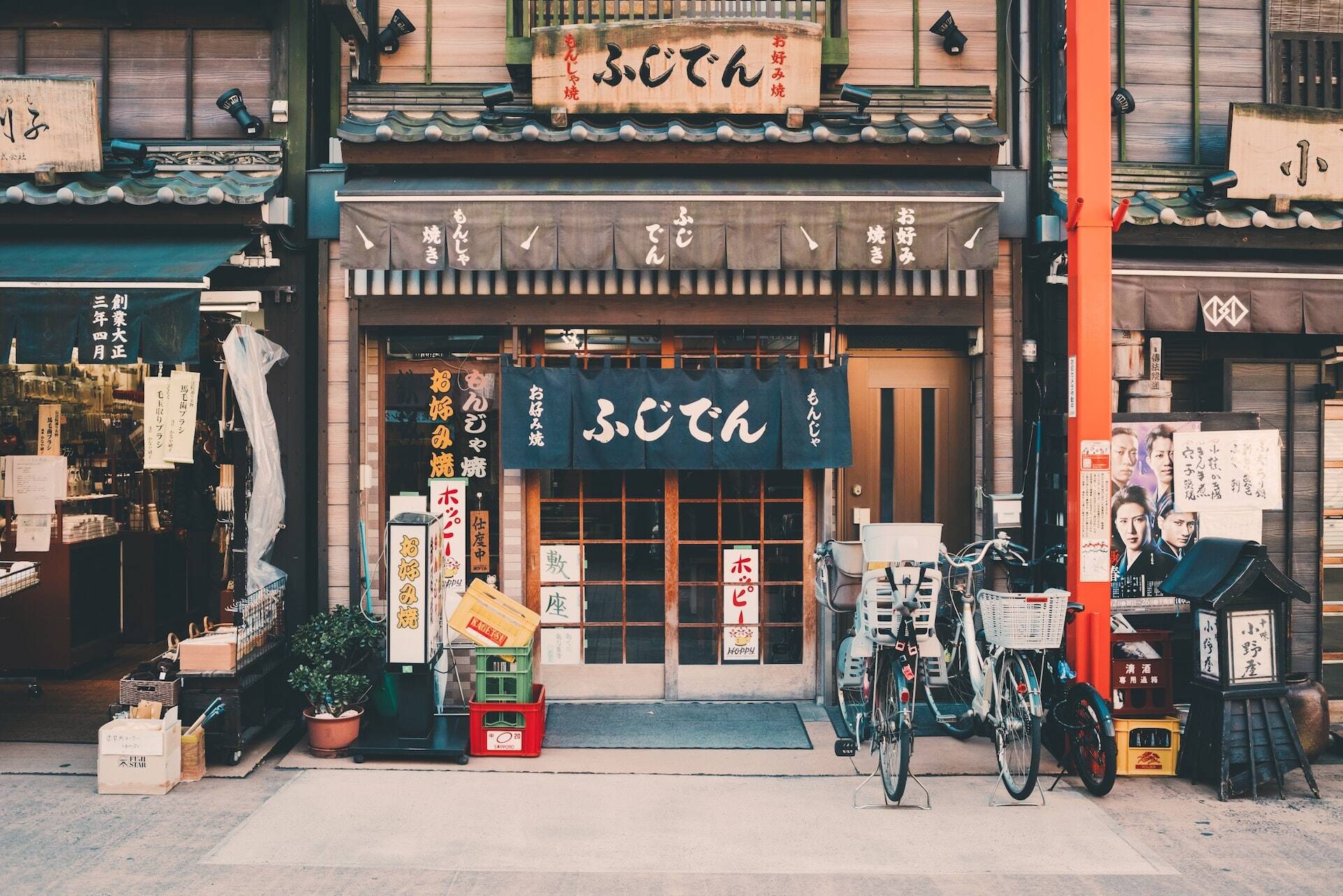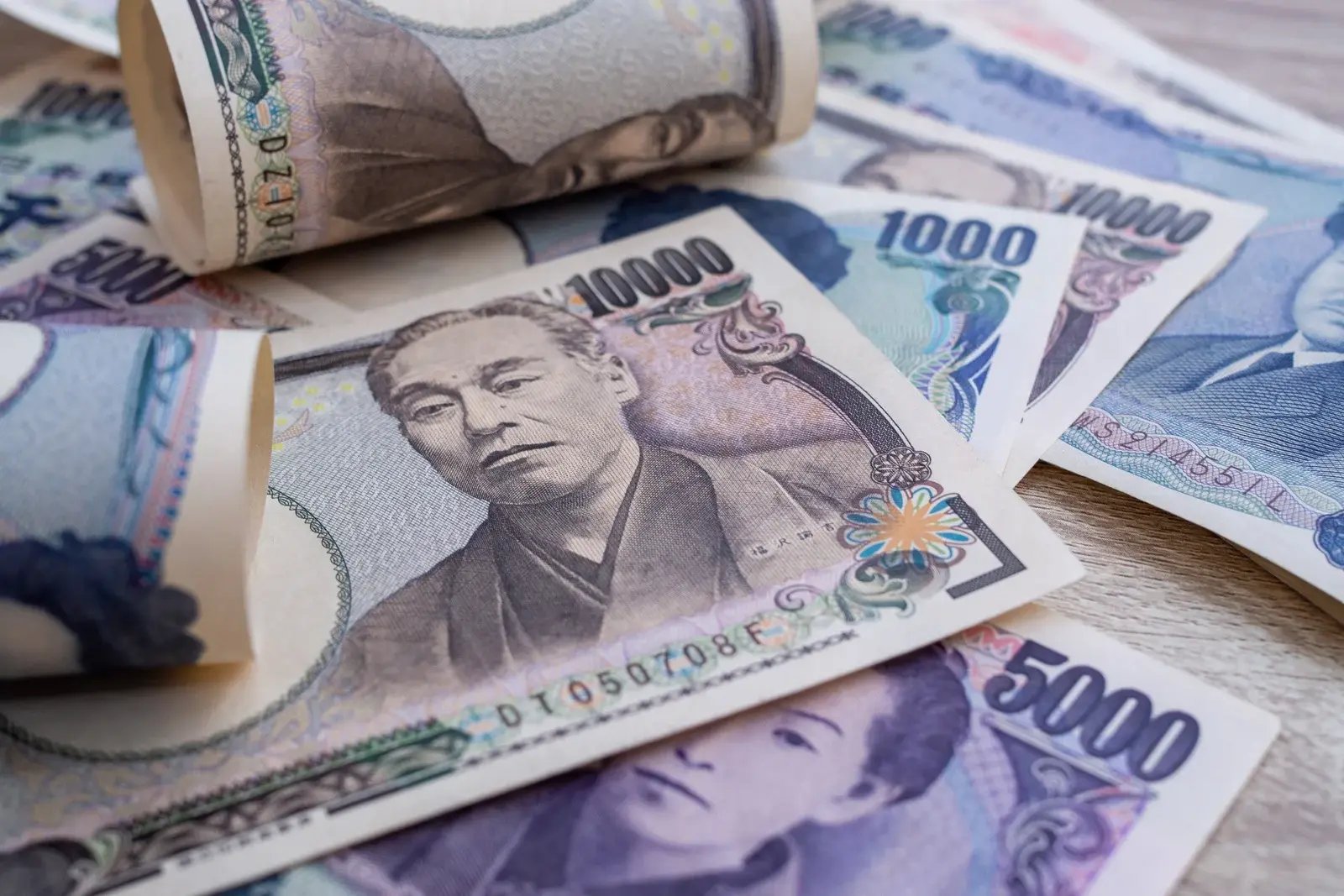💰Scratch to WIN a share of $50,000! Every customer wins. Ends Jan 31st. Learn More

Japan Currency Guide
Japan is a land of contrasts, from the hustle and bustle of Tokyo to the tranquillity of the countryside. Certainly, no trip to Japan would be complete without trying some delicious food! Japanese cuisine is world-renowned, and there is nothing quite like enjoying a delicious sushi meal or a steaming bowl of ramen. Whether you’re interested in exploring the country’s traditional side or experiencing its modern vibrancy, Japan is sure to offer an unforgettable experience.

Taking Travel Money to Japan
If you’re travelling to Japan, you’ll need to exchange your Australian dollars (AUD) for Japanese yen (JPY) before you leave. Check out more information on exchanging AUD to JPY.

Is it better to convert currency in Australia or Japan?
If you’re travelling to Japan, it’s often more practical to exchange your currency in Australia. The Australian Dollar (AUD) is less commonly traded in Japan, which can mean less favourable rates and additional fees if you wait to exchange abroad. By converting to Japanese Yen (JPY) before you depart, you’ll secure a better rate and avoid the hassle of searching for a place that accepts AUD. With your travel funds sorted in advance, you can step right into your Japanese adventure, knowing your budget is maximised and #ReadyForAnything

How much cash can I take to Japan?
There is no limit to the amount of money that may come into or leave Japan. If you transport (any currencies, checks, securities, or other monies) with a total value of more than 1,000,000 yen in Japanese currency into or out of the country, you must declare the total to a customs official at your point of entry or exit.
Where to convert currency?
Crown Currency Exchange is Australia’s largest and leading foreign exchange provider. With over 20 years of experience in ensuring our customers have the exact currencies needed to get the most from their travel adventures, we offer great rates on foreign currency and exceptional customer service. You can collect your foreign currencies from over 60 stores across Australia and get your travel money on the spot, locking in a fantastic exchange rate. Our stores are located nationwide in Sydney, Melbourne, Brisbane, Gold Coast, Canberra, Adelaide, Tasmania & Perth.
What should you budget per day?
Budget
For low-budget travellers, we recommend a daily budget of around ¥11,000 JPY. This will allow you to stay in inexpensive accommodation, eat affordable meals, and enjoy a moderate amount of sightseeing. Dormitories and hostels, which may be found in nearly every city and region of Japan, generally cost less than 4,200 yen per person per night.
For budget travellers, dormitories and hostel accommodation typically cost less than 4,200 yen per person per night. Capsule hotels or budget guesthouses may be available for a similar price in larger cities, and basic guesthouses in rural areas may even offer slightly lower rates if you pay cash.
Moderate
A mid-range daily budget of around ¥22,000 JPY can make your Japan trip more comfortable. Restaurants charge more for dinner than lunch, as there are no lunch specials. However, at this level, you can afford fast food and most restaurants, including those in department stores. This price range allows for comfortable rooms with amenities such as private bathrooms and convenient locations.
Luxury
For a luxury vacation in Japan, we recommend a daily budget of over ¥44,000+ JPY. Admission to some museums and attractions can range from 1,200 yen up to 3,600 yen per person. For theme parks, the average cost is usually between ¥6,000 to ¥10,800 per day. However, if you want to dine at an upscale establishment specialising in sushi, French cuisine, sukiyaki, kaiseki ryori, or steaks, be prepared to spend ¥10,000 yen or more per person.
Luxury hotels, ryokan (traditional inns), and high-end accommodations start at around 30,000 yen per night and can go up to ¥100,000, depending on location, room type, and amenities. For a truly luxurious experience, ryokans often offer included meals featuring kaiseki ryori (Japanese haute cuisine).
What is ATM access like in Japan?
There are plenty of ATMs in Japan, and most will accept foreign cards. Look for the logos of MasterCard and Visa on the ATM, as these are the most widely accepted. You can also find ATMs at post offices and 7-11 stores. Just keep in mind that ATMs have a 100,000 yen per withdrawal limit and will charge you a range of fees. To avoid the hassle and costs, it's best to get your Yen sorted before your departure and take cash with you. This becomes even more important as soon as you leave the major cities and enter Japan's cash economy!
Is tipping customary in Japan? How much is expected?
Tipping is not common in Japan. It can be regarded as impolite and discourteous in a number of situations. Customers must pay for their meals at the front register at most Japanese restaurants rather than leaving money with the waiter or waitress. Tipping isn’t necessary for taxi or bus rides, and hotel services are also rarely tipped.
Can you bargain in Japan?
Overall, haggling is often looked down upon as being cheap and rude. This is especially true if you don’t know how to do it in a way that seems charming and confident. In Osaka, shopkeepers might be more open to bargaining, but they’re not going to do it with customers who they know will never return. Sorry, haggling just isn’t common in this country.
Must-Do's in Japan
 1
1
Ride a bullet train
Riding Japan’s bullet train is an experience you won’t forget. The train reaches top speeds of 602 km/h, making the journey from Brisbane to Perth in just under 8 hours.
 2
2
Eat sushi
You can’t complete your Japan vacation without trying sushi. This traditional Japanese dish is made with fresh, raw fish and vinegared rice. There are many different types of sushi, so you can try a variety and find your favourite.
 3
3
Take a dip in an onsen - a hot spring
Japan is home to many onsens or hot springs. Imagine soaking your tired body in a hot spring, surrounded by beautiful scenery. This is a perfect way to relax and rejuvenate yourself. Some famous onsens are located in Gunma, Oita, and Hokkaido.
 4
4
Marvel at Mount Fuji
Mount Fuji is Japan’s highest mountain, and it is also an active volcano. The last time it erupted was in 1707, but it is still considered active. You can hike to the summit or take a bus tour around the mountain. Either way, you’ll be able to see this magnificent mountain up close.
 5
5
Walk through the magical Fushimi Inari Shrine
The Fushimi Inari Shrine is a Shinto shrine located in Kyoto. It is famous for its thousands of red torii gates leading up to the shrine with around 12,000 steps, It is a long walk, but it is definitely worth it. Walking through the gates is said to be a lucky experience, so make sure you do it when you’re in Kyoto!
country/japan
Japan FAQ's
What do Japan notes & coins look like?

The Japanese currency is some of the most unique in the world. The notes, which are considered legal tender, come in denominations of ¥1,000, ¥2,000 (very rare), ¥5,000, and ¥10,000. The design of the notes is relatively simple, with a portrait of a historical figure on the front and a scene from nature on the back.

Meanwhile, Japanese coins come in denominations of ¥1, ¥5, ¥10, ¥50, ¥100, and ¥500. The ¥1 coin is made of pure aluminium, while the ¥5 coin is made of brass alloy. The ¥10n coin is made of bronze, with 95% copper, 30-40% zinc, and 10-20% tin. The ¥50 and ¥100 coins are made of cupronickel, and the ¥500 coin comprises nickel-brass, cupronickel, and copper. ¥5 and ¥50 coins feature a hole in the centre so they can easily be strung together. As a result of their unique designs and materials, Japanese notes and coins are some of the most interesting in the world.
What is Japan's currency history?
The yen was first minted in 1869 after the Meiji Restoration when the yen replaced the mon currency system of the Tokugawa era. In 1871, the Meiji government halted the exchange of clan notes that feudal lords had produced and in circulation since the mid-16th century under the “New Currency Act” to introduce the yen was officially adopted in an effort to stabilise the nation’s monetary situation at the time.
After the Bank of Japan was established in 1882, the first central banknotes or Daikoku-satsu were issued in 1885 and were convertible in silver. When the devaluation of silver happened in 1873 and Western powers no longer used it as a currency standard, Japan adopted the gold standard in 1897. The fixed exchange rate of the yen was at 0.75g of pure gold, and banknotes were issued which could be turned in for gold. At the end of 1899, National Banks’ banknotes became invalid, leaving only the Bank of Japan authorised to control the money supply.
Following World War II in 1946, Japan introduced the “New Yen” in an effort to stabilise the economy. Though Japan was ravaged during World War II and the yen lost its value, the country had an economic resurgence in the latter half of the 1900s. The yen became one of the most powerful major currencies in the world, challenging the dollar and pound sterling on international markets.
What is Japan's economic situation like?
The Japanese economy is the third largest in the world, with a GDP of $5.06 trillion and the third most traded currency globally after the US dollar (USD) and Euro (EUR). As the second largest automobile manufacturing country, Japan is home to many major brands like Toyota, Nissan and Honda. Japan is also famous for its electronics industry, with companies such as Panasonic, Sony and Sharp. The country has a large fishing industry and is also a major rice producer, placing ninth in global production.
Currency Fact Sheet
Official Currency
Japanese yen
Currency Symbol
¥
Nickname
None
Bank note
¥1,000, ¥2,000 (very rare), ¥5,000, ¥10,000.
Currency Code
JPY
Currency bank
Bank of Japan
Currency Sub-Unit
Sen = 1/100 of the yen | Rin = 1/1,000 of the yen
Coins
¥1, ¥5, ¥10, ¥50, ¥100, ¥500
